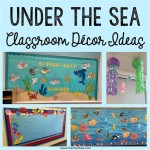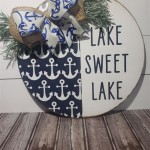Home Decor Logo Ideas: Designing a Brand Identity for Interior Design & Home Furnishings
A logo serves as the cornerstone of brand identity, particularly within the visually driven home decor sector. A well-designed logo encapsulates a company’s aesthetic principles, target audience, and overall brand message. This article explores various logo design ideas relevant to the home decor industry, offering insights into elements, color palettes, typography, and stylistic approaches that resonate with potential customers.
Understanding the Role of Visual Identity in Home Decor
The home decor industry is inherently visual. Consumers are drawn to images and styles that align with their personal tastes and aspirations for their living spaces. A logo, therefore, functions as a visual shorthand, communicating a brand’s style, quality, and ethos at a glance. It must be memorable, adaptable across various platforms, and accurately reflect the brand's unique selling proposition.
Visual identity goes beyond just the logo; it encompasses the entire visual presentation of the brand, including color schemes, typography, imagery, and overall design aesthetic. All these elements should work harmoniously to create a cohesive and recognizable brand experience. A strong visual identity builds trust and credibility, fostering customer loyalty and setting a brand apart from competitors.
In the digital age, a logo's versatility is paramount. It needs to be easily recognizable and legible across different screen sizes, from large desktop monitors to small mobile devices. Furthermore, it must be scalable without losing quality, ensuring it looks equally sharp on a business card as it does on a billboard.
Key Elements in Home Decor Logo Design
Several key elements contribute to the effectiveness of a home decor logo. These include the use of relevant imagery, appropriate typography, a well-chosen color palette, and a distinct overall style that reflects the brand’s aesthetic. The selection of these elements should be deliberate and grounded in a thorough understanding of the target audience and the brand's positioning within the market.
Imagery can convey the essence of the brand. For a company specializing in modern furniture, a minimalist representation of a chair or table might be appropriate. For a brand focusing on rustic or farmhouse style, a stylized image of a house or a natural element like a leaf or branch could be more effective. The imagery should be clean and uncluttered, avoiding overly complex illustrations that can appear dated or difficult to reproduce.
Typography plays a crucial role in conveying the brand’s personality. A serif font, such as Times New Roman or Garamond, can evoke a sense of tradition and elegance, while a sans-serif font, like Helvetica or Arial, can project a more modern and minimalist aesthetic. The font choice should also be legible and easily readable, even in smaller sizes. Pairing different fonts can add visual interest, but it’s important to maintain balance and avoid using too many different typefaces.
The color palette is another significant aspect of logo design. Colors evoke emotions and associations, and their strategic use can significantly impact how a brand is perceived. Neutral colors, such as beige, gray, and white, can create a sense of sophistication and calmness, while bolder colors, like blue, green, or yellow, can convey energy and optimism. It’s essential to consider the psychological effects of different colors and how they relate to the overall brand message. Limiting the color palette to a few carefully chosen hues ensures a cohesive and memorable visual identity.
Logo Style Considerations for Home Decor Brands
The overall style of a logo should reflect the brand’s specific niche within the home decor industry. A company specializing in minimalist Scandinavian design will likely require a very different logo than a brand offering traditional Victorian-style furnishings. Several stylistic approaches can be employed, each with its own distinct characteristics and appeal.
Minimalist logos are characterized by their simplicity and lack of ornamentation. They often feature clean lines, geometric shapes, and a limited color palette. This style is well-suited for brands that emphasize functionality, modernity, and a clutter-free aesthetic. Minimalist logos are also highly versatile and easily adaptable to various applications.
Vintage or retro logos draw inspiration from design trends of the past. They often incorporate elements like hand-drawn illustrations, ornate typography, and faded color palettes to create a sense of nostalgia and charm. This style is appropriate for brands that focus on antique or vintage-inspired home decor items.
Abstract logos use non-representational shapes and forms to create a unique and memorable visual identity. This style allows for greater creativity and can effectively convey a brand’s values or personality in a subtle and symbolic way. Abstract logos are often used by brands that want to stand out from the competition and project a more avant-garde image.
Geometric logos utilize precise shapes and forms to create a structured and modern aesthetic. This style is well-suited for brands that emphasize precision, order, and functionality. Geometric logos can be particularly effective for companies specializing in architectural design or modern furniture.
Hand-drawn or illustrative logos offer a more personal and artisanal feel. They often incorporate hand-lettered typography or custom illustrations to create a unique and authentic visual identity. This style is appropriate for brands that emphasize craftsmanship, creativity, and a human touch.
Examples of Home Decor Logo Ideas
To further elucidate the concepts discussed above, consider a few specific examples of logo ideas for different types of home decor brands.
For a modern furniture company, a logo might feature a simple geometric outline of a chair or a stylized representation of a mid-century modern lamp. The typography could be a clean sans-serif font like Futura or Helvetica, and the color palette might consist of neutral tones like gray, white, and black, with a pop of color like teal or mustard yellow.
For a brand specializing in rustic farmhouse decor, a logo could incorporate a hand-drawn illustration of a house or a barn, along with a serif font like Baskerville or Garamond. The color palette might consist of warm, earthy tones like beige, brown, and olive green, evoking a sense of comfort and nostalgia.
A company offering high-end interior design services might opt for a more sophisticated and minimalist logo. The logo could feature an abstract representation of a room or a subtle monogram created from the company’s initials. The typography could be a refined sans-serif font like Avenir or a classic serif font like Didot, and the color palette might consist of a monochromatic scheme or a combination of black, white, and gold.
For a brand focusing on eco-friendly and sustainable home decor, a logo could incorporate natural elements like leaves, trees, or water droplets. The typography could be a friendly and approachable sans-serif font like Open Sans or Lato, and the color palette might consist of greens, blues, and browns, reflecting the brand’s commitment to environmental responsibility.
Consider a business selling bohemian-style home decor. The logo could feature intricate patterns inspired by global textiles, incorporating rich, vibrant colors like turquoise, magenta, and saffron. A free-flowing, hand-lettered font could reinforce the brand’s free-spirited and artistic nature.
Practical Considerations for Logo Design
Beyond the aesthetic considerations, several practical factors should be taken into account when designing a logo for a home decor brand. These include the logo's scalability, versatility, and memorability. A logo that looks great on a website but is illegible on a business card is ultimately ineffective. Similarly, a logo that is too complex or difficult to reproduce can create problems in the long run.
Scalability refers to the logo's ability to be resized without losing quality. A vector-based logo is ideal for this purpose, as it can be scaled infinitely without becoming pixelated or distorted. This is particularly important for brands that plan to use their logo across a wide range of applications, from small product labels to large-format advertising.
Versatility refers to the logo's ability to be used in different contexts and on different backgrounds. A logo should work equally well in color and in black and white, and it should be legible on both light and dark backgrounds. It’s also important to consider how the logo will look when used online versus in print.
Memorability is crucial for creating a strong brand identity. A logo should be easy to remember and instantly recognizable. Simple and uncluttered logos tend to be more memorable than complex and overly detailed designs. The use of a unique color combination or a distinctive visual element can also help to enhance memorability.
Finally, it’s important to conduct thorough research and gather feedback before finalizing a logo design. This includes analyzing the logos of competitors, surveying potential customers, and testing different design options. The goal is to create a logo that not only looks aesthetically pleasing but also effectively communicates the brand’s message and resonates with its target audience.

Home Decor Logo Images Browse 400 845 Stock Photos Vectors And Adobe
Home Decor Logos 310 Best Logo Ideas Free Maker 99designs

Home Decor Logo Vectors Ilrations For Free Freepik

Home Decor Logo Template Interior Designer Templates

Home Decor Logo Images Browse 400 845 Stock Photos Vectors And Adobe

Home Decor Logo Designs Themes Templates And Able Graphic Elements On Dribbble

Home Decor Logos 310 Best Logo Ideas Free Maker 99designs

Premium Vector Minimalist Style Home Decor Logo Design

Home Decor Logo Images Browse 400 845 Stock Photos Vectors And Adobe
Home Decor Logos 310 Best Logo Ideas Free Maker 99designs
Related Posts







